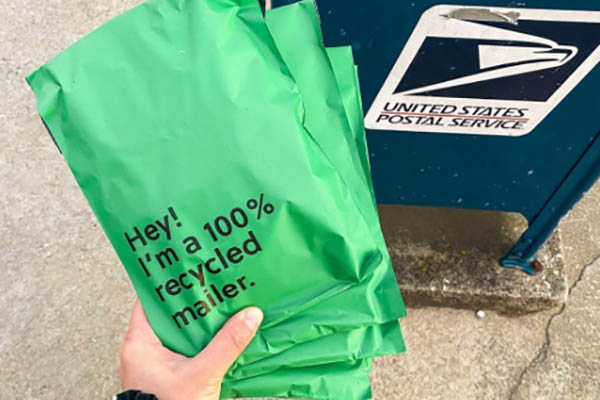What is Green Packaging?
Green packaging refers to packaging solutions that are specifically designed to have a reduced environmental impact. This type of packaging focuses on using materials and processes that are considered to be less harmful to the environment compared to traditional packaging methods. Green packaging often involves:
- Recyclable Materials: Green packaging typically uses materials that can be recycled after use. Common recyclable materials include paper, cardboard, glass, and certain types of plastics. The goal is to reduce waste by ensuring that packaging can be reused or repurposed instead of ending up in a landfill.
- Biodegradable and Compostable Materials: Green packaging may also use materials that are biodegradable or compostable. Biodegradable materials can break down naturally over time with the help of microorganisms, while compostable materials decompose under specific conditions to create nutrient-rich compost. Examples include plant-based plastics, paper, and cornstarch-based materials.
- Reduced Use of Harmful Chemicals: Green packaging aims to minimize the use of harmful chemicals and additives that could potentially leach into the environment. This includes avoiding inks, dyes, and coatings that contain heavy metals or toxic substances.
- Energy-Efficient Production: The manufacturing processes for green packaging are often designed to be energy-efficient and to produce fewer greenhouse gas emissions. This may involve using renewable energy sources, optimizing production methods, and reducing waste during manufacturing.
What is Sustainable Packaging?
Sustainable packaging goes a step further than green packaging by taking a more holistic approach to environmental responsibility. While green packaging focuses primarily on the materials and processes used to create packaging, sustainable packaging considers the entire lifecycle of a product, from sourcing and production to distribution, use, and disposal. Sustainable packaging aims to minimize the overall environmental footprint throughout the packaging’s life cycle. Key aspects of sustainable packaging include:
- Life Cycle Assessment (LCA): Sustainable packaging involves conducting a life cycle assessment to evaluate the environmental impact of packaging materials and processes from cradle to grave. This means considering the raw materials used, the energy required for production, transportation emissions, and the end-of-life disposal or recycling options.
- Resource Efficiency: One of the primary goals of sustainable packaging is to use resources more efficiently. This includes reducing the amount of material used in packaging (lightweight), optimizing the design for minimal waste, and selecting materials that require less energy to produce.
- Circular Economy Principles: Sustainable packaging supports the concept of a circular economy, where products and materials are designed to be reused, repaired, or recycled in a continuous loop. This approach aims to extend the lifespan of packaging materials, reduce the need for virgin resources, and minimize waste.
- Social and Economic Considerations: Unlike green packaging, which focuses primarily on environmental impact, sustainable packaging also takes social and economic factors into account. This includes ensuring fair labor practices, supporting local communities, and considering the economic viability of packaging solutions.
Key Differences Between Green Packaging and Sustainable Packaging
While green packaging and sustainable packaging share some common goals, such as reducing environmental impact, they differ in their scope and approach:
- Focus and Scope: Green packaging primarily focuses on the environmental aspects of packaging materials and production processes. It emphasizes using eco-friendly materials and minimizing harmful chemicals. In contrast, sustainable packaging takes a broader view by considering the entire life cycle of packaging and its impact on the environment, economy, and society.
- Lifecycle Perspective: Sustainable packaging involves a comprehensive analysis of the entire lifecycle of packaging, from raw material extraction to end-of-life disposal. This holistic approach helps identify opportunities to reduce environmental impact at every stage. Green packaging, on the other hand, is more focused on the immediate environmental benefits of using certain materials or processes.
- Circular Economy: Sustainable packaging is closely aligned with the principles of a circular economy, where packaging materials are designed to be reused, recycled, or composted in a continuous cycle. Green packaging may also support recycling and composting, but it does not necessarily consider the broader concept of a circular economy.
- Long-Term Impact: Sustainable packaging aims to create long-term solutions that balance environmental, economic, and social considerations. Green packaging may provide short-term benefits by using eco-friendly materials, but it does not always account for the long-term sustainability of those materials or the packaging system as a whole.
Conclusion
In summary, while both green packaging and sustainable packaging aim to reduce the environmental impact of packaging, they differ in their approach and scope. Green packaging focuses on using eco-friendly materials and minimizing harmful chemicals, while sustainable packaging takes a more comprehensive view by considering the entire life cycle of packaging and its impact on the environment, economy, and society. By understanding these differences, businesses and consumers can make more informed choices about the packaging solutions they use and support a more sustainable future.
Post time: 08-29-2024


